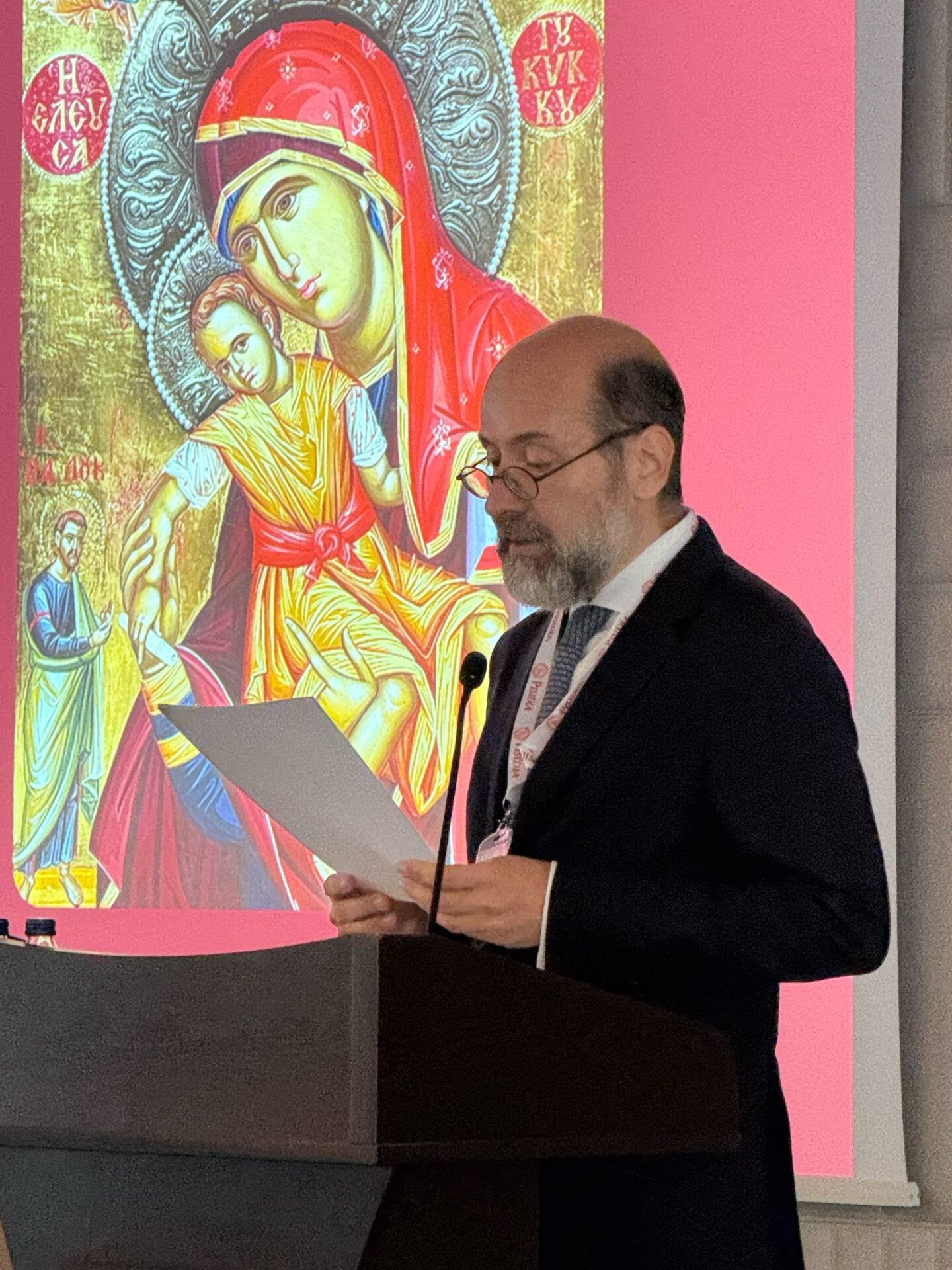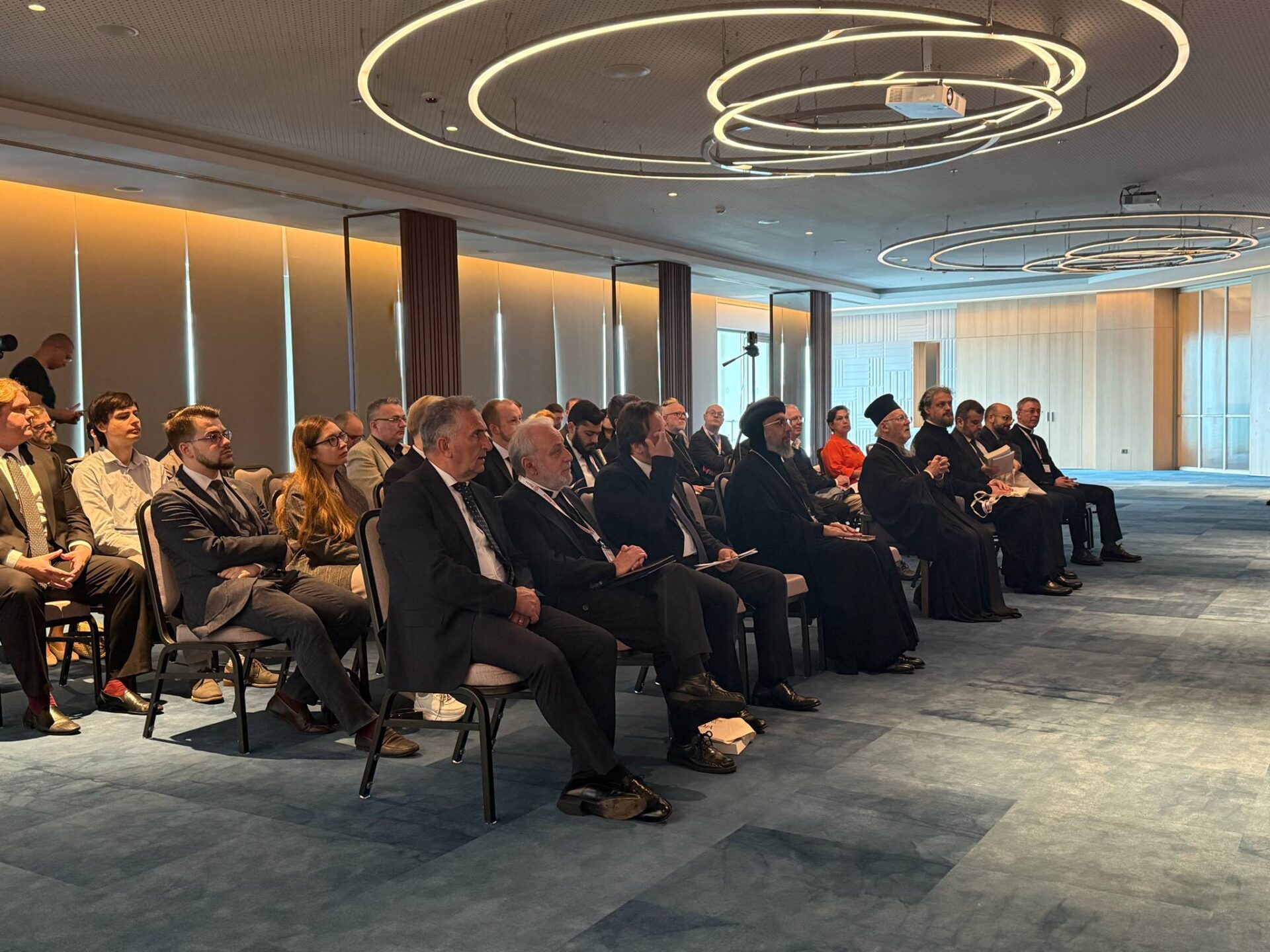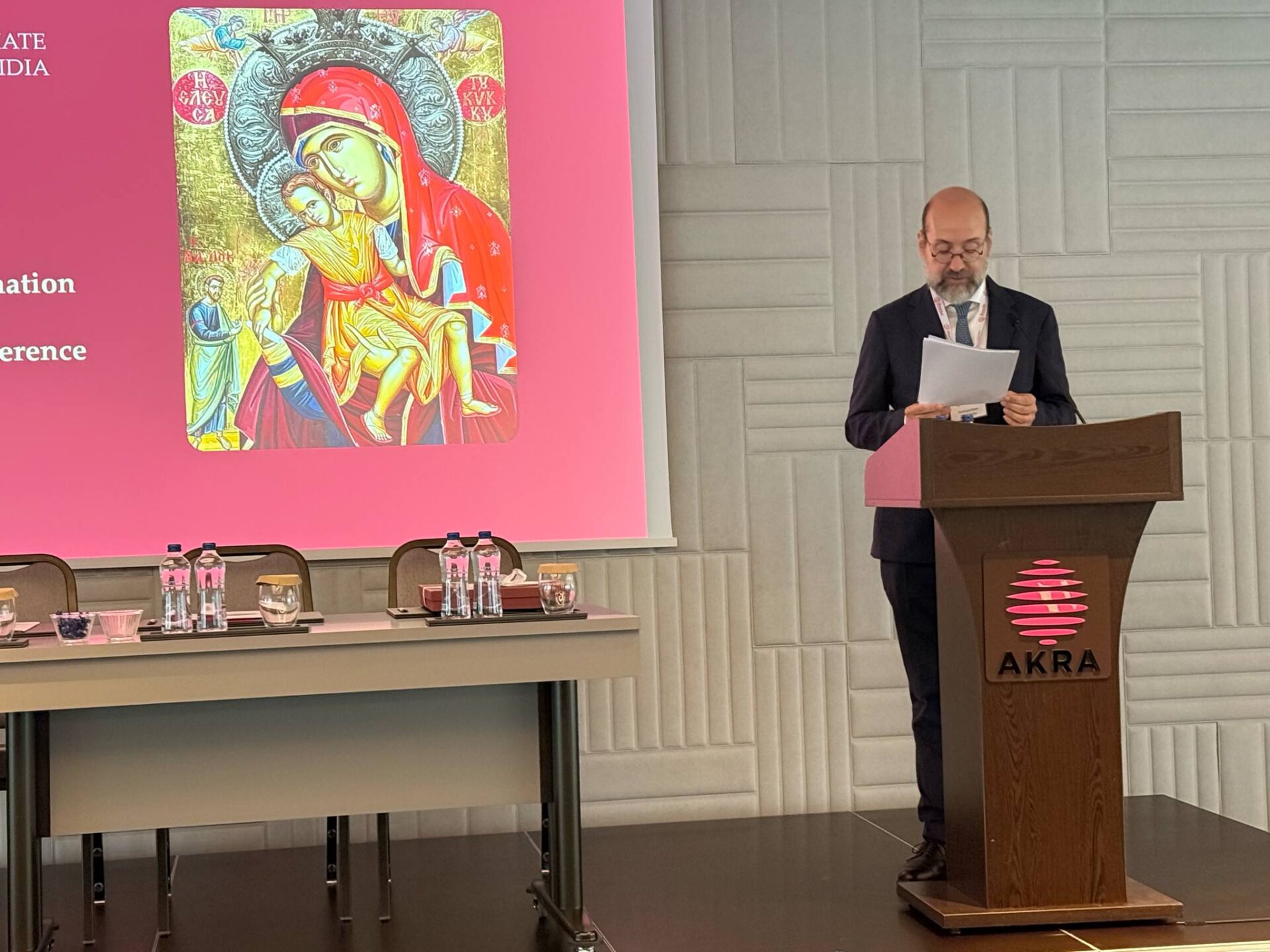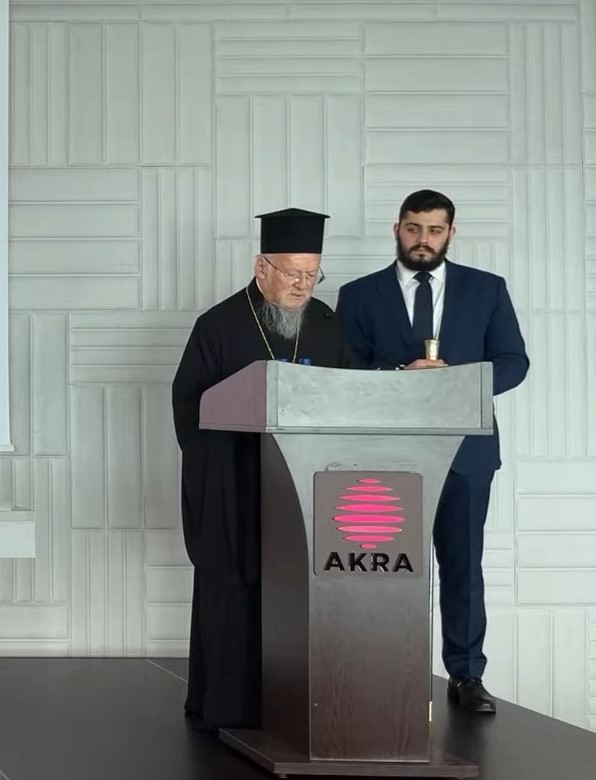Στην σημασία της Α’ Οικουμενικής Συνόδου της Νικαίας αναφέρθηκε η Α.Θ. Παναγιότης ο Οικουμενικός Πατριάρχης κ.κ. Βαρθολομαίος, ο οποίος κήρυξε την έναρξη των εργασιών του Διεθνούς Επιστημονικού Συνεδρίου με θέμα «Ξεκινώντας ξανά από τη Νίκαια: Η Σημασία της Ενσάρκωσης στη Σύγχρονη Θεολογία», το οποίο πραγματοποιείται στην Αττάλεια με πρωτοβουλία της Ι. Μητροπόλεως Πισιδίας. Ο Παναγιώτατος, στην ομιλία του, μεταξύ άλλων, επεσήμανε ότι η πίστη της Νικαίας είναι το κοινό έδαφος και η κοινή εμπειρία σχεδόν όλων των Χριστιανών. Αυτό και μόνο το γεγονός, συνέχισε, μας καλεί να αναζητήσουμε απαντήσεις που θυμίζουν μια εποχή που τηρούσαμε σταθερά μια κοινoτική κατανόηση της Πίστης μας. Όπως είπε, η 1700ή επέτειος από την σύγκληση της Συνόδου της Νικαίας προσφέρει την ευκαιρία αξιοποιήσεως αυτού του οροσήμου στην χριστιανική ιστορία “για να μας βοηθήσει να επικοινωνήσουμε πιο αποτελεσματικά και πιο ρεαλιστικά με τον Λαό του Θεού, όπου κι αν βρίσκεται.”
Επισήμανε δε ότι το Οικουμενικό Πατριαρχείο, ως ο πρώτος Θρόνος εκ των τεσσάρων Πρεσβυγενών Θρόνων της Ανατολής εκ της αρχαίας Πενταρχίας και Μητέρα Εκκλησία του μεγαλύτερου μέρους της Ανατολικής Ορθοδοξίας, πρωτοστατεί στην προσπάθεια αυτή με ποικίλες πρωτοβουλίες, ενώ έκανε ιδιαίτερη αναφορά στον αείμνηστο Πάπα Φραγκίσκο, με τον οποίο επιθυμούσαν να τιμήσουν από κοινού αυτή την επέτειο, λέγοντας ότι έδωσε το παράδειγμα να αγωνιζόμαστε μέχρι την τελευταία μας πνοή.
Προηγουμένως, τους συνέδρους καλωσόρισε ο Ποιμενάρχης Σεβ. Μητροπολίτης Πισιδίας κ. Ιώβ, ενώ χαιρετισμούς απηύθυναν ο Εντιμ. κ. Vural Korkmaz, εκπρόσωπος του τοπικού δήμου Muratpaşa της Ατταλείας, και ο Ελλογιμ. Δρ. Simone Tropea, εκπρόσωπος του οργανισμού “Corpus International Association” που συνεργάστηκε στη διοργάνωση του Συνεδρίου.
Στο διήμερο Διεθνές Επιστημονικό Συνέδριο συμμετέχουν Ιεράρχες και κληρικοί διαφόρων Εκκλησιών, καθώς και διακεκριμένοι θεολόγοι από διάφορες χώρες.
ADDRESS of His All-Holiness Ecumenical Patriarch Bartholomew at the International Scientific Conference Restarting from Nicaea: The Importance of the Incarnation in Contemporary Theology Ecumenical Patriarchate – Holy Metropolis of Pisidia Akra Hotel – Antalya, Turkey (May 6, 2025)
HIS ALL HOLINESS ECUMENICAL PATRIARCH
B A R T H O L O M E W
Patriarchal Address at the International Scientific Conference
Restarting from Nicaea:
The Importance of the Incarnation in Contemporary Theology
Ecumenical Patriarchate – Holy Metropolis of Pisidia
Akra Hotel – Antalya, Turkey
(May 6, 2025)
* * *
Your Eminences, Your Excellencies, and Your Graces,
Distinguished Members of the Academic Community,
Reverend Clergy,
Beloved Sisters and Brothers in the Risen Christ,
Χριστὸς Ἀνέστη! [Ἀληθῶς Ἀνέστη!]
Christ is Risen! [Truly He is Risen!]
Kristos Voskres! [Voistinu voskres!]
With paternal and Patriarchal pride, we welcome all of you – and especially our ecumenical brethren, to this Conference: Restarting from Nicaea: The Importance of the Incarnation in Contemporary Theology.
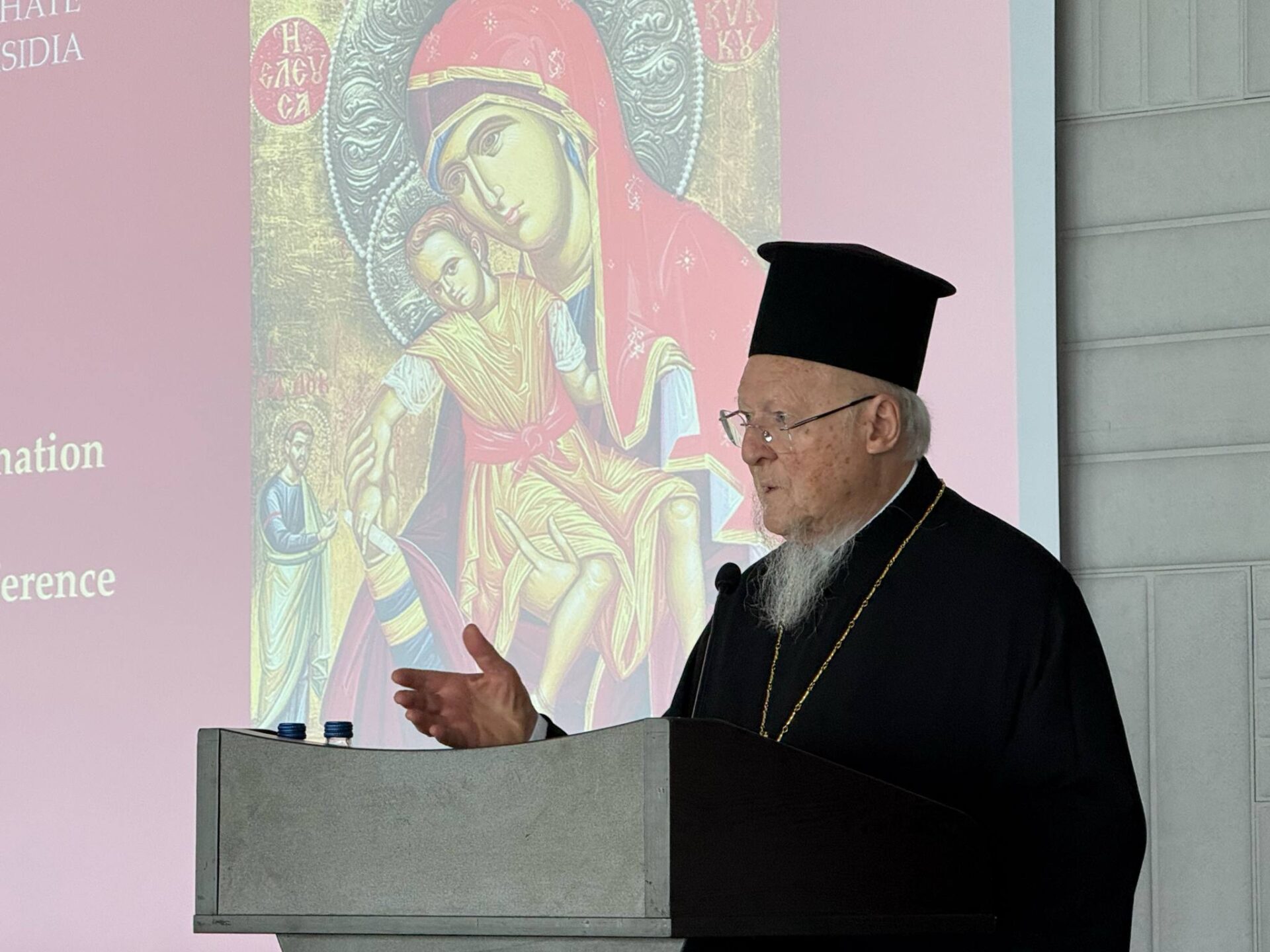
On behalf of all, we express our gratitude to His Eminence, Metropolitan Job of Pisidia and his co-workers, for their efforts to bring this conference to fruition here in Antalya.
We share in this work of re-initializing the fundamental truths of Nicaea with Corpus International, a wonderful ecumenical partner from the Roman Catholic Tradition. The coming days hold the promise of a deep exploration of our common spiritual heritage – a legacy held by the world’s traditional Christian Communities for the past seventeen hundred years.
This milestone of an anniversary presents numerous considerations and opportunities. From uniformity in the date of the Holy Pascha, to liturgical and canonical customs, Nicaea provides the contemporary Church with abundant sources of inspiration. Nevertheless, we have gathered to give our attention to that most marvelous outcome of this First Ecumenical Council, the definition of the Creed, and the solution to the question of how to understand – at least on a most minimal level of language – the relationship of our Lord Jesus Christ to His Heavenly Father. In other words, how to apprehend with our intellects – as much as is humanly possible – God as Holy Trinity.
The Trinitarian understanding of God is very much taken for granted today, so many centuries removed from the disputes and quarrels that rankled the first Centuries of our Faith. But our symposium challenges such unspoken assumptions. Nicaea is not a mere historical formulation (to be repeated without awareness), but the foundation of all the pillars upon which the Church stands.
As I said just days ago during my Visit to the Diocese of Caserta in Italy, at the Basilica of Saint Angelo in Formis:
“The spirit of Nicaea must once again ignite the Christian message.” [1]
And that is why we are gathered – to reignite the Church with the spirit of Nicaea, the spirit of a unified and harmonious Christianity. In one of the Festal Hymns of the Orthodox Christian Feast for the 318 Fathers of the First Ecumenical Council – which is on the Seventh Sunday of this Season of the Resurrection (this year on the First Day of June), we chant:
The preaching of the Apostles and the teachings of the Fathers confirmed the one Faith in the Church. And wearing the garment of truth woven from the theology on high, She rightly defines and glorifies the Great Mystery of Piety. [2]
Τῶν ἀποστόλων τὸ κήρυγμα, καὶ τῶν Πατέρων τὰ δόγματα, τῇ Ἐκκλησίᾳ μίαν τὴν πίστιν ἐκράτυνεν· ἣ καὶ χιτῶνα φοροῦσα τῆς ἀληθείας, τὸν ὑφαντὸν ἐκ τῆς ἄνω θεολογίας, ὀρθοτομεῖ καὶ δοξάζει, τῆς εὐσεβείας τὸ μέγα μυστήριον.
In Greek, we see very clearly the distinction offered – that of Kerygma and Dogma – the former announced to the world by the Apostles, and the latter bestowed upon the world as an extrapolation of this “Preaching,” by the Fathers and Saints of the Church.
By the time we arrive at Nicaea, with the Church now legalized and even favored by the Imperial Government, we have reached a serious inflection point. The vast Empire that reaches from Eastern Anatolia to the Pillars of Hercules needs a common way of speaking about the most basic understandings of the Apostolic Kerygma – or in other words, a theology, for we are speaking about God.
And this is indeed fraught with dangers and difficulties. As God Himself reminds us through the Prophet Isaiah:
Οὐ γάρ εἰσιν αἱ βουλαί Μου ὥσπερ αἱ βουλαί ὑμῶν οὐδὲ ὥσπερ αἱ ὁδοὶ ὑμῶν αἱ ὁδοί Μου, λέγει Κύριος.
For neither are My thoughts as your thoughts, nor are your ways as My ways, says the Lord. [3]
This is where we always begin, with the inestimable gulf between our language and the ineffable language of God. We know that speaking about God – theologizing – is a risky business. But we also have the lived experience of the Church, the Body of Believers. And this experience is the basis for the Kerygma of the Church.
We may be able to deny the experience of others for a time, even as the Eleven Disciples attempted to mitigate the shock of the announcement to them by the Myrrh-bearers, that the Lord was risen indeed! When the Women proclaimed what they knew in their souls, we hear this about the Disciples – those to become Apostles:
The Women’s words seemed to be preposterous to them, and they were incredulous. [4]
Here, we begin to see how the experience of the Faith triumphs over any and all arbiters of the Faith. And we should never forget this, for the truth of the “Great Mystery of Piety” – τῆς εὐσεβείας τὸ μέγα μυστήριον – cannot be concealed or altered by any created or human artifice. As the Apostle reminds us in Second Timothy:
If we are faithless, [God] is faithful, for He cannot deny Himself. [5]
Given that God Himself has established the very parameters for how to articulate His presence among us – the Preaching of the Apostles and the Teachings of the Fathers – we are called even now to unfold both of them for the edification of the Body of Christ.
It is not enough for the affirmations of the Faith to be enshrined in liturgical life and ensconced in our many books. Every generation has the responsibility to look at them anew.
Therefore, beloved brethren in the Lord, we are assembled these days for presentations and papers, for dialogue and conversation – that we may renew within ourselves and within our communities the truths of Nicaea. For, when we consider how many of the world’s Christians still adhere to the express formulation of this First Ecumenical Council, this is surely a sign that what was enacted seventeen hundred years ago, has the same validity and power today, which it did at that time. We need only find ways to make this declaration of the Faith relatable and relevant to the contemporary world and in contemporary ways of understanding.
And this is indeed our task – to instill and emphasize in our modern forms of theologizing the essence of Nicaea. If we may say it in this way, our theology must be ὁμοούσιος with that of Nicaea; for the power of the Apostolic Preaching, and the elucidation of the Teachings of the Fathers is to be found there.
Applying this same principle – the ὁμοούσιον – upon which the entire theology of Nicaea depends, to our current interpretations will ensure that no matter the manner of expression, the basis for our expositions of the Faith will remain true. Every generation has its own modalities of communication. Perhaps the most laconic expression of the Incarnational Faith of Nicaea comes from our righteous predecessor on the Throne of Constantinople, Saint Gregory Nazianzen – rightly called the “Theologian.”
Τὸ γὰρ ἀπρόσληπτον, ἀθεράπευτον.
For that which has not been assumed, has not been healed.[6]
The very concision of this amazing statement was designed for a particular issue – that of the heresy of Apollinaris of Laodicea. And in 381 in Constantinople – at what would become known as the Second Ecumenical Council – the Nicene Creed, as we have received it, was completed. The ideas of Apollinaris were rejected, so as to not relinquish the Faith of Nicaea, of more than half a century earlier.
For it is the experience of the Church – known in the Preaching of the Apostles and expounded in the teachings of the Fathers, that was not only enshrined at Nicaea, but was also preserved in such a way that even the most illiterate person could access them.
We know that the Council’s Creedal statement of Faith was assembled from confessions of faith that were in use for baptism. Given the literacy rates in these early centuries, particularly among the lower and slave classes of the Roman Empire, it was entirely reasonable that a pithy synopsis of the fundamental truths of our Faith should be developed for mass usage. Nicaea standardizes that confession for the entire οἰκουμένη, and sets the Creed as a binding mortar to hold together a far-flung Empire.
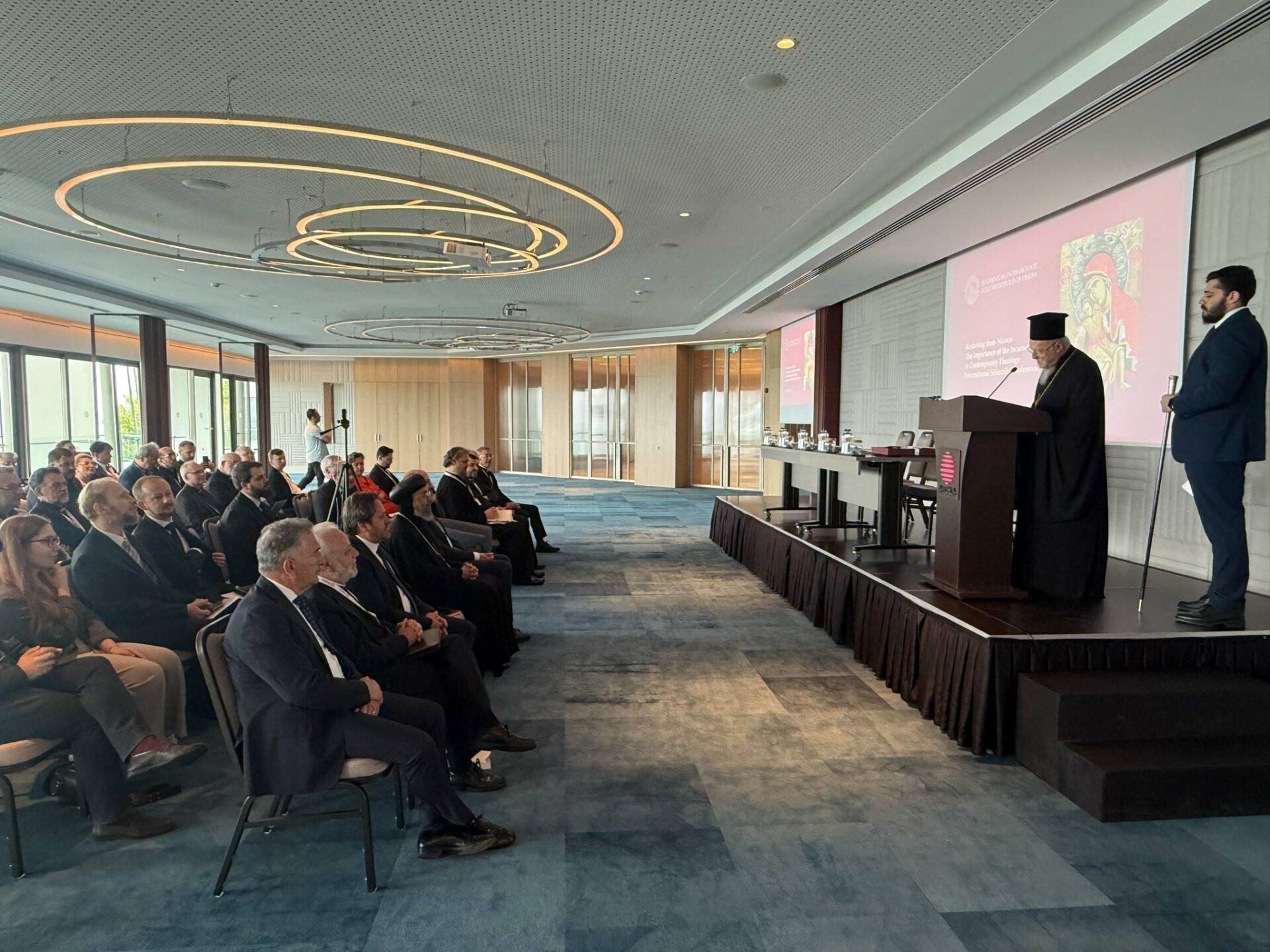
Dear Friends,
Although we no longer live in a world of Christian Empire, we are Christians of the far-flung reaches of geography, and more importantly, history. The seventeen hundred years since Nicaea have witnessed division and dissolution within the Christian family, such that when we speak of “Church,” we all may not mean the same thing.
This is why the re-initialization of the Faith of Nicaea is so vital. It is the common ground and shared experience of virtually all Christians on planet Earth – nearly two and a half billion of us. This fact alone calls us to seek answers that hearken back to a day when we held fast to a communal understanding of our Faith.
Thus, our task is to restart from Nicaea, from the unalloyed and integrated Kerygma of the Apostles and the Dogmata of the Fathers. Through these coming days, we will apply Nicaea in all its wisdom to contemporary issues – whether of pastoral, liturgical, social, ecclesiological, ecological, or eschatological implications.
When we consider the state of the world today, and the diverse and divergent trends that have emerged in Christianity – especially in the last one hundred years – we really do not have a choice. We must seize upon this milestone in Christian history to help us communicate more effectively and more realistically to the People of God, wherever they may be.
The Ecumenical Patriarchate, the Church of Constantinople, the Mother Church of most of Eastern Orthodoxy, and the Primus of the remaining Four Elder Sees of the Ancient Pentarchy, has both the joy and the responsibility to lead in these efforts. This involves not only in academic setting such as this, but also in every aspect of ecumenical dialogue.
The passing of Pope Francis, whom we counted as a dear friend and whose memory shall surely live on in the hearts of the human family, somehow coincides with our vocation. Passing into eternal life after the Holy Pascha on the Monday of what we Orthodox call, “Bright Week,” seems like a message to all of us. To remember that we must labor, as the Lord Christ said, while it is yet the day. [7] Pope Francis gave an example to strive until the very last breath, as our Lord did upon the Cross.
In closing, let us embrace fully the meaning and significance of the ὁμοούσιον, gifted to us by the 318 Fathers of Nicaea. When we become consciously aware of our consubstantiality with one another, we are already in the experience of the Faith. And as Nicaea has taught, the Lord Jesus, Who is Son of God and Son of Mary – ὁμοούσιος τῷ Πατρί καὶ ὁμοούσιος τῇ Μητρί – makes us “partakers of the Divine Nature” through his Incarnation.[8]
This is what it means to be a Christian. This is what means to be the People of God. This is what it means to be the Church.
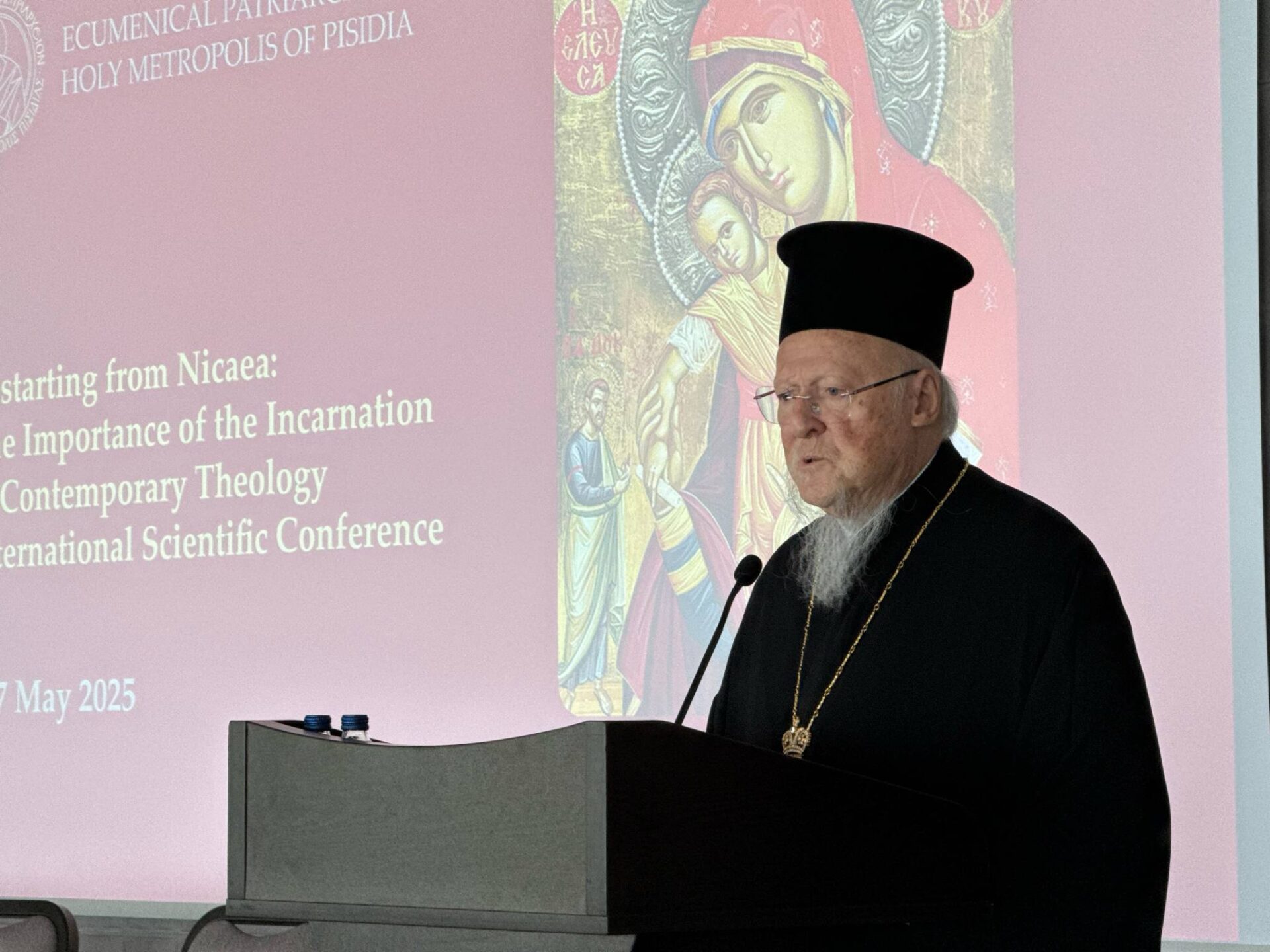
As the Hymn we recited earlier – called a Kontakion – sings, the Church wears the garment of truth woven from the theology on high, and so She rightly defines and glorifies the Great Mystery of Piety.
With boldness, then, let us trust in that “garment of truth woven from the theology on high,” gifted to us by the Fathers of the Church. They wove a seamless robe, like the one upon which the soldiers who crucified the Lord of Glory cast lots. The exigencies of nations, the passage of time, and the ever-shifting tides of history have done much to remove all the Churches from one another.
But Nicaea is another seamless garment, woven from on high – from top to bottom, like that of the Lord upon Golgotha. [9] Returning to its wisdom, its glory, its reason, and its utter inspiration is as valid today, seventeen hundred years later, as it was at every subsequent Council after Nicaea.
May our undertakings be blessed and as fruitful!
So be it. Amen. Γένοιτο!
______
1. May 2, 2025.
2. Kontakion of the Fathers, Tone VIII.
3. Isaiah 55:8 (LXX).
4. Luke 24:11.
5. II Timothy 2:13.
6. Saint Gregory the Theologian, Letter CI to Cledonios the Presbyter against Apollinarios (Migne, Patrologia Graeca Tomus XXXVII, 181C).
7. Cf. John 12:9.
8. II Peter 1:4.
9. John 19:23.
_______
Φωτό: Νίκος Παπαχρήστου
